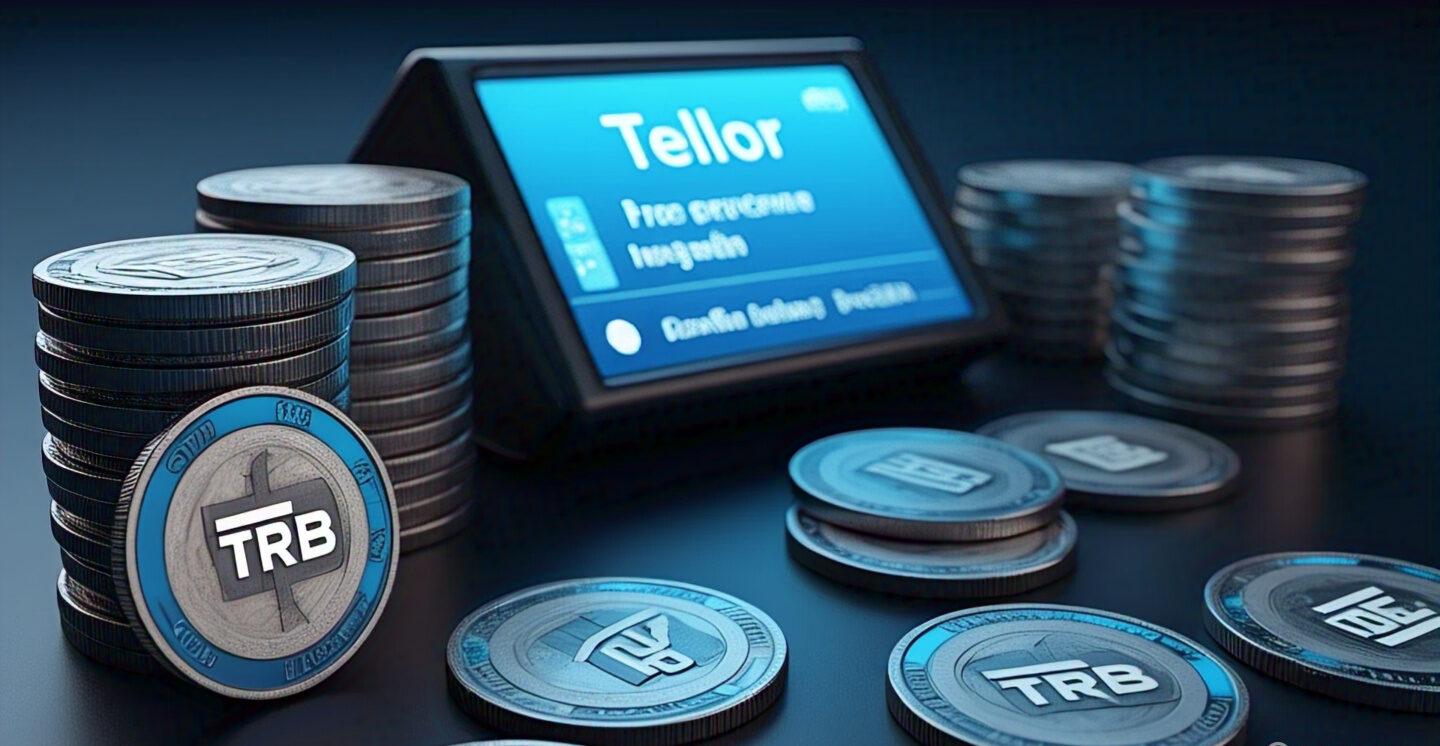Among crypto investors, Tellor (TRB), a distributed oracle system allowing smart contracts on Ethereum and other Blockchain Growth to access off-chain data, has attracted fascination. Many investors wonder whether TRB can recover its all-time high (ATH) and provide good returns between 2025 and 2031 as we enter a new cycle of technological development and market maturity. This all-encompassing pricing estimate for Tellor seeks to provide insight into its long-term potential incorporating macroeconomic elements, technology advancements, market dynamics, and relative performance against other oracle systems.
Knowing Tellor Function of a Decentralised Oracle
Understanding Tellor’s value in the distributed finance (DeFi) ecosystem will help one appreciate the TRB price projection for 2025 to 2031. As essential infrastructure, oracles like Tellor close the distance between real-world data and on-chain smart contracts. Tellor uses a staking and conflict system to reward data reporters for turning in correct information.
Brenda Loya, Nicholas Fett, and Michael Zemrise started Tellor in 2019; it has positioned itself as a permissionless, censorship-resistant oracle solution. Tellor’s relevance might grow greatly in the next years as Ethereum Layer-2 scaling and cross-chain interoperability become more popular.
TRB Historical Performance together with the 2021 All-Time High
During the DeFi frenzy, TRB set its all-time high price in May 2021 at about $161. The explosion of smart contract use cases in DeFi, gaming, and NFTs during this time caused oracles including Chainlink (LINK), Band Protocol (BAND), and Tellor exponential interest. Like many cryptocurrencies, however, TRB weakened during the 2022 crypto winter and battled to recover its former speed during 2023 and early 2024.

Although TRB trades at a much lower price as of mid-2025, many analysts and investors are reevaluating its long-term value proposition given improving fundamentals, rising acceptance in distributed systems, and impending protocol updates.
Market Trends Affecting TRB Price: 2025 to 2031 Prices
Over the next six years, many macro and micro trends could affect the TRB price path. One main influence is the growing need for safe, distributed oracles as smart contract acceptance is rising in many different fields, including IoT, banking, insurance, and gaming.
Decentralised data feeds are in increased demand as zero-knowledge proofs, Layer-2 networks like Arbitrum and Optimism, and cross-chain platforms including Cosmos and Polkadot attract more popularity. Tellor gains from this change since it has been extending its compatibility with several chains.
Furthermore, the global regulatory scene is progressively turning in favour of utility tokens, therefore developments in on-chain governance could help TRB to flourish over time. Concurrently, the forthcoming Ethereum improvements (after “The Surge”) could greatly increase scalability and throughput, therefore data-intensive oracle solutions like Tellor even more important.
TRB Price Forecast 2025
Driven by a larger cryptocurrency market recovery and rising use in specialised DeFi systems, TRB is likely to reclaim some of its lost territory by 2025. Technical indicators, on-chain data, and market sentiment analysis point to a modest price range for TRB in 2025—between $40 and $70. Under optimistic conditions, especially if Tellor is included into a significant DeFi ecosystem or Layer-2 chain, the token may once more reach $100. Long-term holders may set themselves in expectation of increased protocol adoption, therefore marking the start of a multi-year accumulation period.
TRB Price Forecast: 2026–2028
Tellor could see exponential expansion between 2026 and 2028, particularly should the Web3 ecosystem suffer another rise like to 2020–2021. The spread of synthetic assets, distributed insurance systems, and algorithmic stablecoins calls for strong, permissionless oracle services. Its liquidity and investor appeal could also be enhanced by more visibility, alliances with important industry heavyweights such as ConsenSys or Chainlink Labs, and inclusion in big crypto indexes.
Should Tellor keep innovating—perhaps by including artificial intelligence-enhanced data validation or merging with corporate blockchain systems—the TRB token may potentially trade in the $120–$180 area by 2028. Especially if Tellor turns into a favoured oracle for permissioned DeFi utilised by established financial institutions, this timeframe could potentially see a retest or surpassing of the 2021 ATH.
TRB Price Forecast: 2029–2031
The blockchain sector is predicted to develop dramatically between 2029 and 2031, maybe shifting from early-stage innovation to global-scale acceptance. Only oracles providing high dependability, decentralisation, and integration flexibility will thrive in this matured environment.
Tellor’s capacity to keep nimble in development and governance will determine its viability over this long-term horizon. Assuming the protocol keeps changing and remains competitive, by 2031 TRB might be valued anywhere between $200 and $300. A speculative peak in this period—especially in a late-decade bull market—may drive it past $400, especially if global financial infrastructure is more scattered.
Still, there will be intense rivalry from other oracle initiatives such Chainlink, API3, and Pyth Network. Future value of Tellor will depend critically on its capacity to set itself apart with speedier data finality, tokenomics enhancements, and community governance.
Obstacles and Risks in TRB’s Long-Term Vision
Investors should be mindful of many hazards notwithstanding the possible benefit. Tellor’s expansion may be hampered by Oracle manipulation tactics, government monitoring, rivalry from centralised API companies like Google Cloud and AWS, and restricted marketing outreach.
Token inflation and governance decentralisation are still further problems. The TRB token economy would suffer to keep long-term investor confidence if it does not change with the state of the market. Furthermore, should applications derived from Ethereum transfer to other Layer-1s or use proprietary oracles, TRB demand could stagnate. Tellor’s relevance thus depends on ongoing expansion of ecosystems.
Is a Tellor a wise long-term investment?
For those who think that distributed oracles and data autonomy in smart contracts will continue to rise, Tellor offers a convincing long-term investment possibility. < Tellor meets a niche but rising demand inside the DeFi and Web3 ecosystems by emphasising decentralisation, censorship resistance, and protocol integrity.
Positive signs for long-term investors in the project’s roadmap, track record of resilience, and flexibility in a competitive environment. Prospective purchasers should still be cognisant of macroeconomic and crypto-specific risks, though, and engage careful due diligence.


